7 Tips to Eat Street Food Safely in Thailand
16 Comments
Updated Dec 04, 2017
This post may contain affiliate links. See my disclosure policy.
When it comes to international travel, some countries are definitely easier than others to eat healthy, gluten-free meals. Ahem, Sydney, I’m looking at you!
But that in no way, shape or form means you need to stick to well paved roads. A lickety-split detour, dusty dirt road or bounce-you-outta-your-seat pothole might just turn into your most memorable life adventure.
Like my 4-hour solo motorbike ride from Chiang Mai to Pai. A combination of self-doubt conquering + confidence boosting + “I am woman hear me roar!” and “holy smokes, I really did this!?” kind of adventure. It’s now one for the story books.
A healthy lifestyle is about much more than food. So. Much. More. But still, food safety can’t be underscored. Especially if you have celiac disease like me.
So after calling Chiang Mai “home sweet home” for nearly 6 weeks, I’d like to share 7 tips to eat street food safely in Thailand.
1. Bring food allergy dining cards
Food allergy dining cards are always handy to have. Think of them as food safety insurance. They translate what you can and can’t eat and why. Dining cards from Select Wisely highlight specific allergies (gluten, dairy, etc) and preferences (like no sugar).
And let me remind you – sugar is added to virtually everything in Thailand.
But I’ll be honest. I find these cards more appropriate for sit-down restaurants versus street food. For those times when your waiter can “borrow” your card for a conversation with the chef.
In the case of Thai street food, where your cook, waiter, hostess and server are one and the same…it can be information overload. They’re juggling multiple hats and don’t typically have time to wade through the nuances of your dietary restrictions.
But as prior planning is the friend of someone with food allergies…I’d still keep them in your back pocket. At all times.
3. Write down and learn to say your food allergies – in Thai!
Getting straight to the point is preferred in a street food environment. So stick to the basics – the non-negotiable ingredients you can’t have. For me, I can’t have any meals with soy sauce or oyster sauce, which both contain gluten. Sugar won’t kill me.
Of course, there are other gluten-containing sauces and deep fried “crispies” added to numerous meals in Thailand, but those are easier to visually spot and avoid. Soy sauce and oyster sauce have a way of sneaking in.
To make things easy, I had my hotel receptionist write down these two phrases in Thai. Then, I practiced the phonetic pronunciation with her until I sounded like a local. Or more accurately, where I didn’t completely sound like a farang!
No soy sauce – Mai ow see eeou khow
No oyster sauce – Mai ow sot hoi
When used with street vendors, I would also say “allergy,” or “get sick” (while holding my stomach). Universal communication is a beautiful thing.
4. Ask what the ingredients are BEFORE you mention your allergies
This may not seem like a big deal, but it is, particularly in Thailand. The reason? Cultural tendencies. Thai’s are incredibly friendly, warm and accommodating. It’s the land of smiles!
But when it comes to your food, that translates into a bit of a problem. Namely, they’ll want to please you.
If you say something like “I can’t have soy sauce…does this have soy sauce?” They’re more likely to say no, thinking that’s what you want to hear. Or, the dish may have a small amount soy sauce, which they’ll assume is close enough to none.
Ask what the ingredients are first. You’ll thank me later.
True story: while I was en-route to my Thai Cooking School I was chatting with our instructor in the van. Given her solid English, I mentioned my avoidance of wheat, soy sauce and oyster sauce as I would get “very sick.” We had a good discussion about it and she understood I had a medical condition. But then a few minutes later she said, “I think the reason you have problem is because you eat too much wheat in the US. But a little is probably still fine. You should just try today.”
To which I just smiled back. :)
5. Stick to single ingredients as much as possible
When it comes to street food, steer clear of prepared meals, glazes and sauces. Food with the least number of ingredients are your best (and safest!) options.
Some of my favorites include:
- fruit on a stick (or in a cup)
- smoothies and juices
- quail eggs
- egg boats/mini omelets
- bacon-wrapped mushrooms
- mangos and sticky rice (yes, I’m Paleo and eat white rice!)
- grilled prawns, squid and other seafood
- pork or fish meat balls (*note: a starch is sometimes used – cassava, potato, or arrowroot. If ordering, double check there’s no wheat flour, by using your dining card).
- chicken and pork skewers
Street food that has a higher probability of getting you sick includes stir frys (due to cross contamination), certain soups (where it’s hard to know all ingredients) and BBQ-style meat with glazes or sauces (like the red-glazed chickens you’ll see hanging).
6. Watch vendors prepare food for several patrons before ordering
I can’t emphasize this enough – take your time when eating from street vendors. Stand back and watch them for 5-10 minutes. Take a look at their ingredients, how they prepare food (especially if someone just ordered what you want) and the cleanliness of their grill or pans.
The reality is that street vendors are trying to serve the masses…for a buck or two per meal. They’re simply not going to wash pans between orders or be extra careful based on your requests. It’s up to you to do your due diligence.
Video from the Sunday Night Market. I had my eyes on pork balls from a few different vendors, with different preparation methods. This vendor boiled the pork balls. She also added a sauce right before serving. Because I saw her do this for other patrons, I requested no sauce. Oh, and by the way – they were delish and worth the added effort!
7. Avoid food that’s been sitting or not cooked over high heat
This is the number one way to get sick. Period. When it comes to meat skewers and grilled pork balls, you want those babies grilled over flames! A slightly warm grill isn’t going win the war against bacteria nasties.
So when placing your order, make sure your food is cooked fresh. And avoid all food that looks like it’s been sitting for 30 minutes or longer.
Then again, if you’ve followed tip #6, you’ll know as you’ve already been watching the vendor for a while.
And for those wondering…after 6 weeks in Thailand (eating out A LOT), I never did get sick from street food. It just goes to show that a little preparation, time and effort can make an adventurous foreign travel experience one of your best!
How do you feel about eating in a foreign country? Have any tips or tricks to add? I’d love to hear!
Make sure to check out Roaming Free – A Whole Food Approach for Traveling the World Healthy, Happy and Gluten-Free for more tips, advice and wanderlust inspiration!


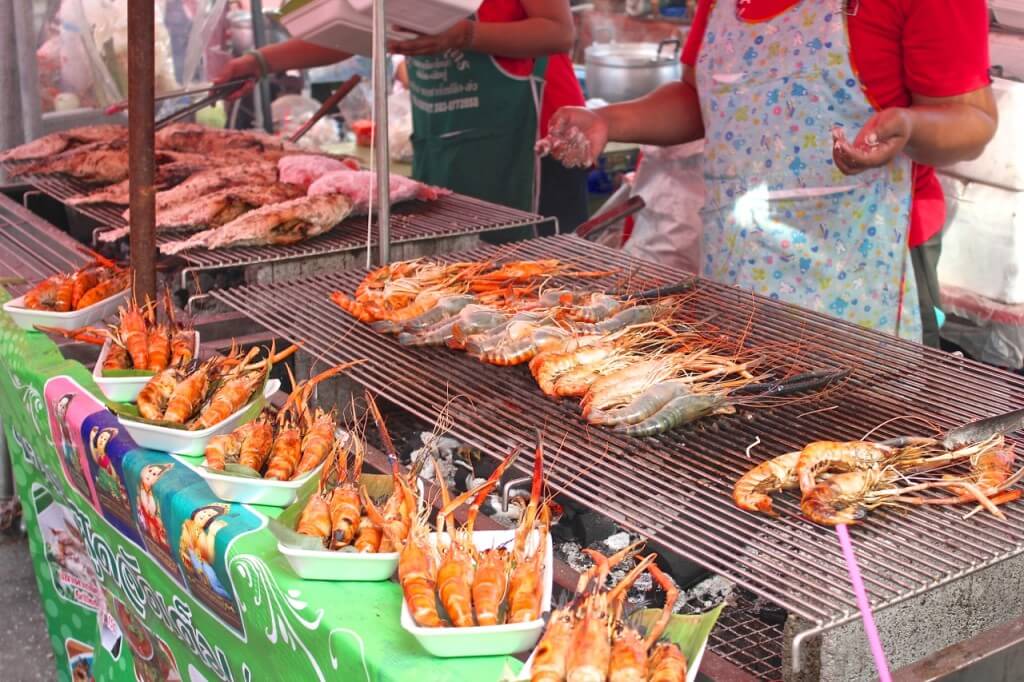

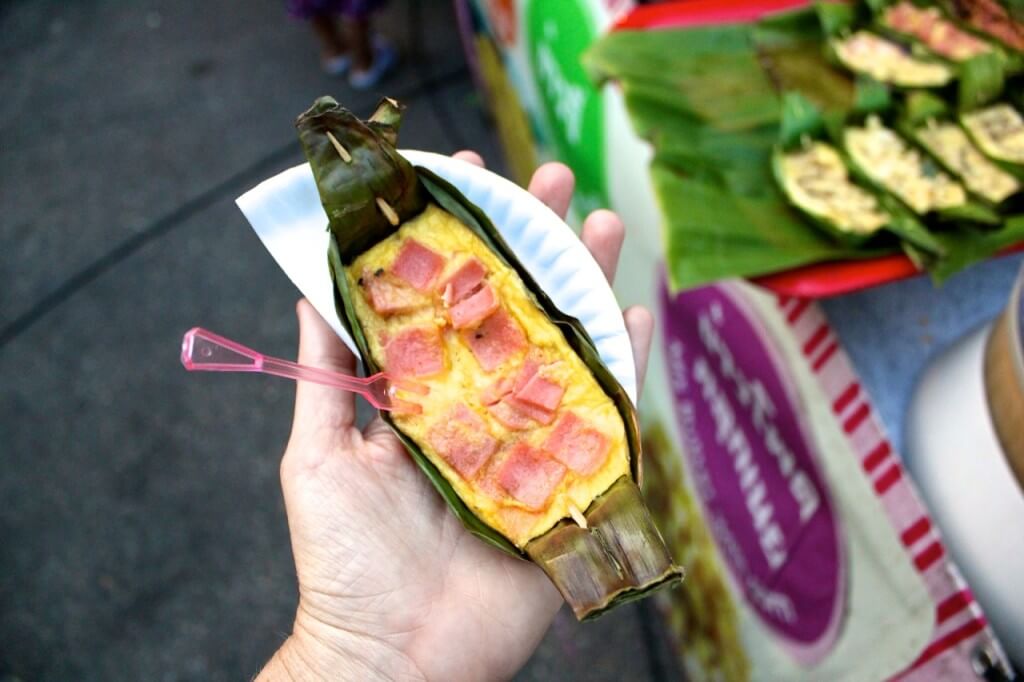
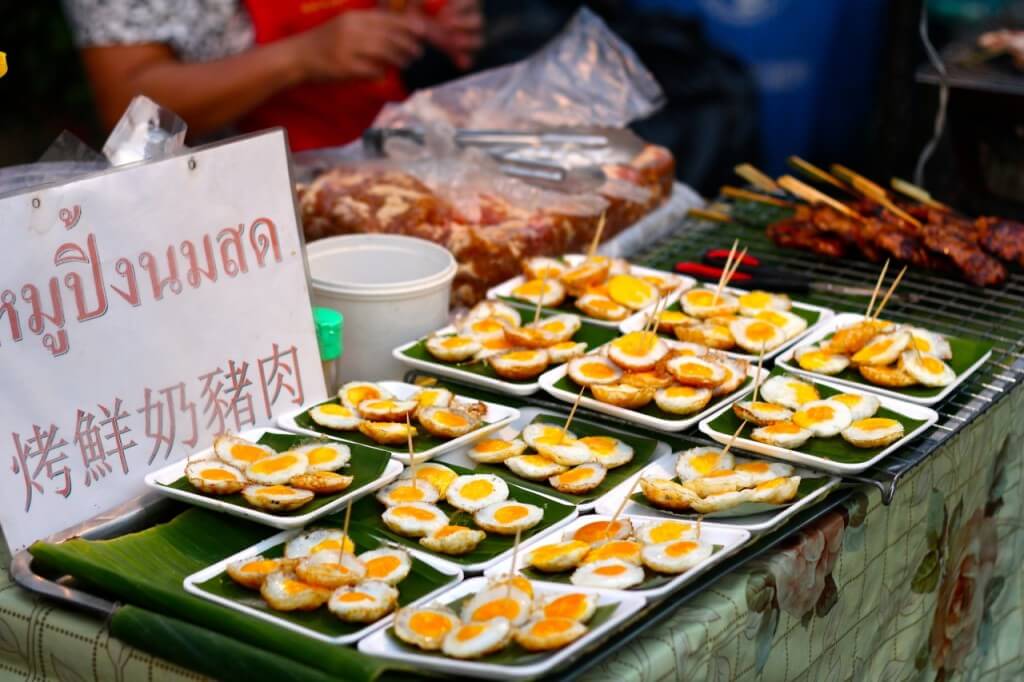
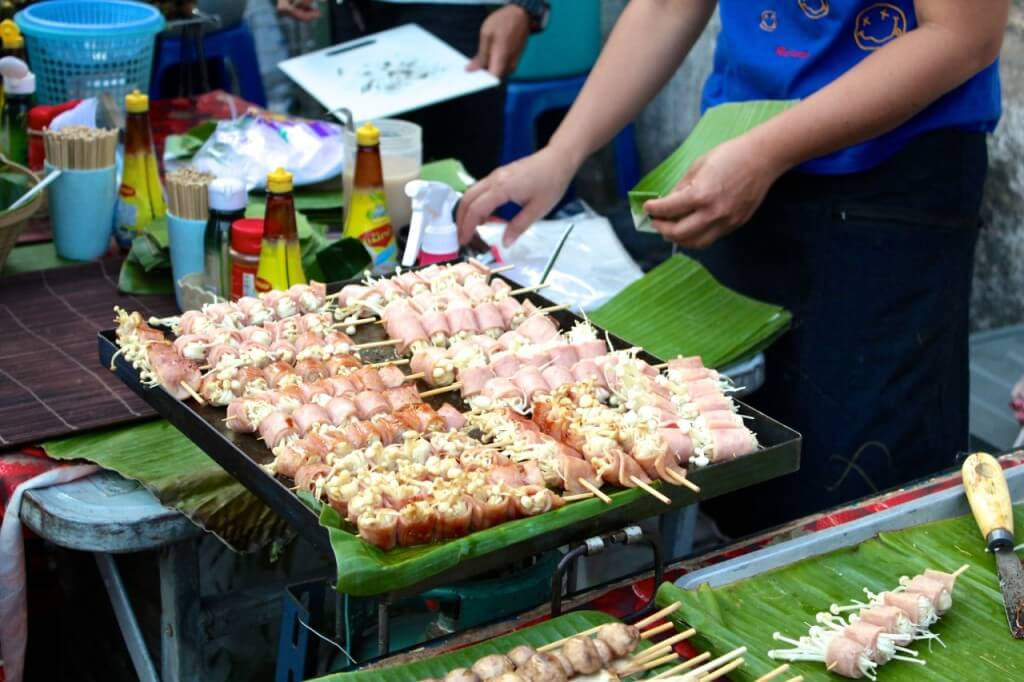
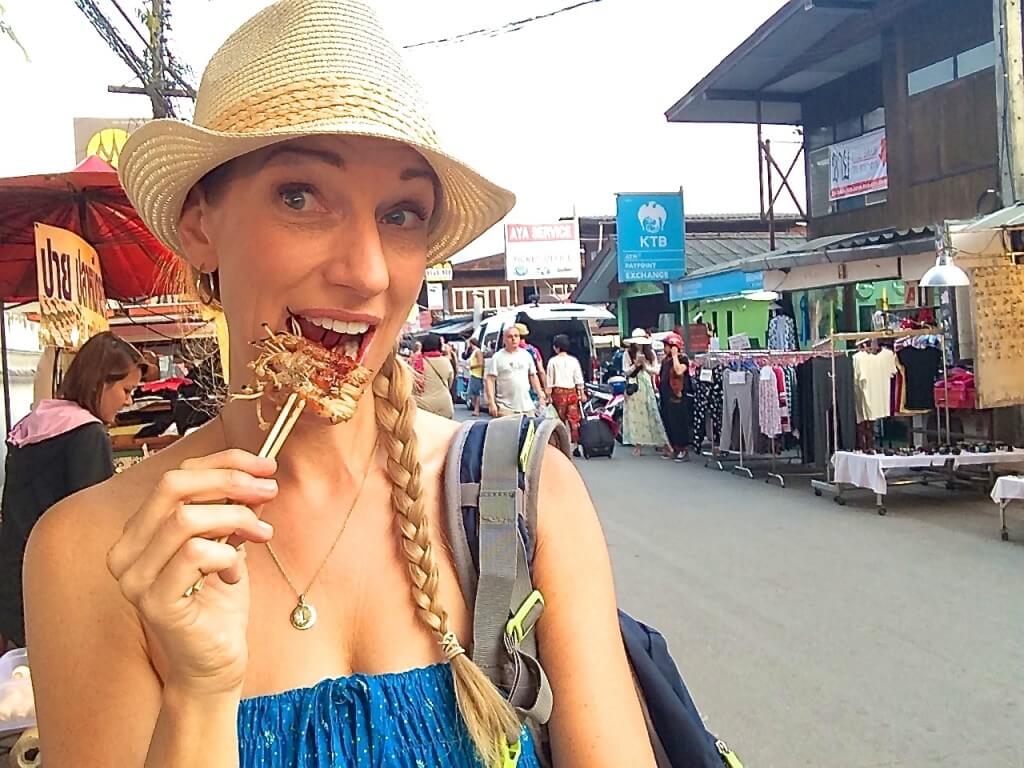
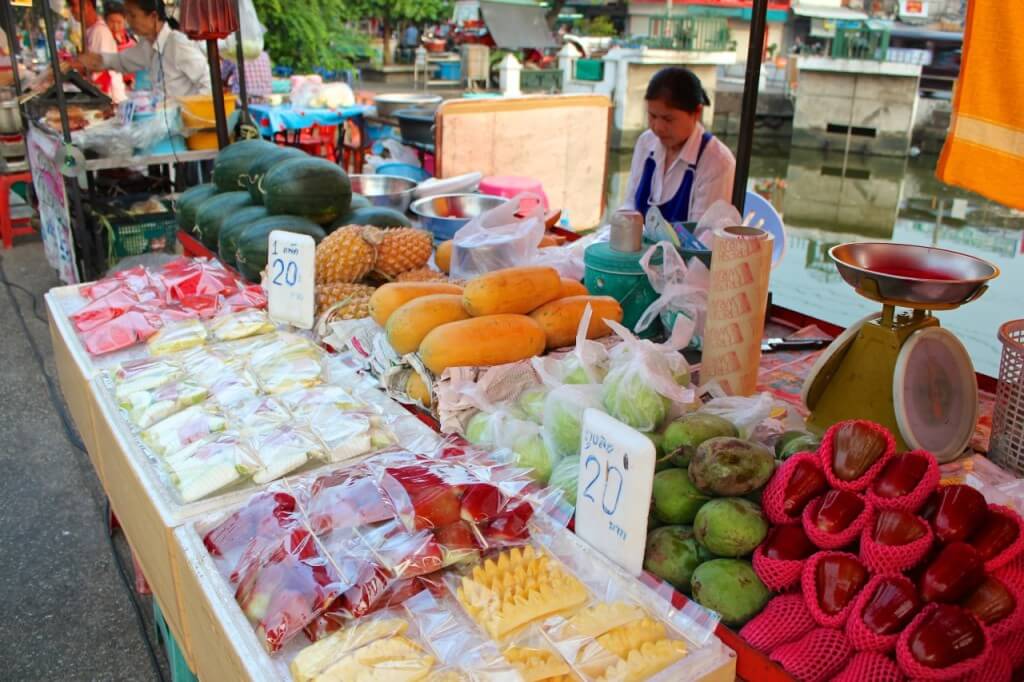


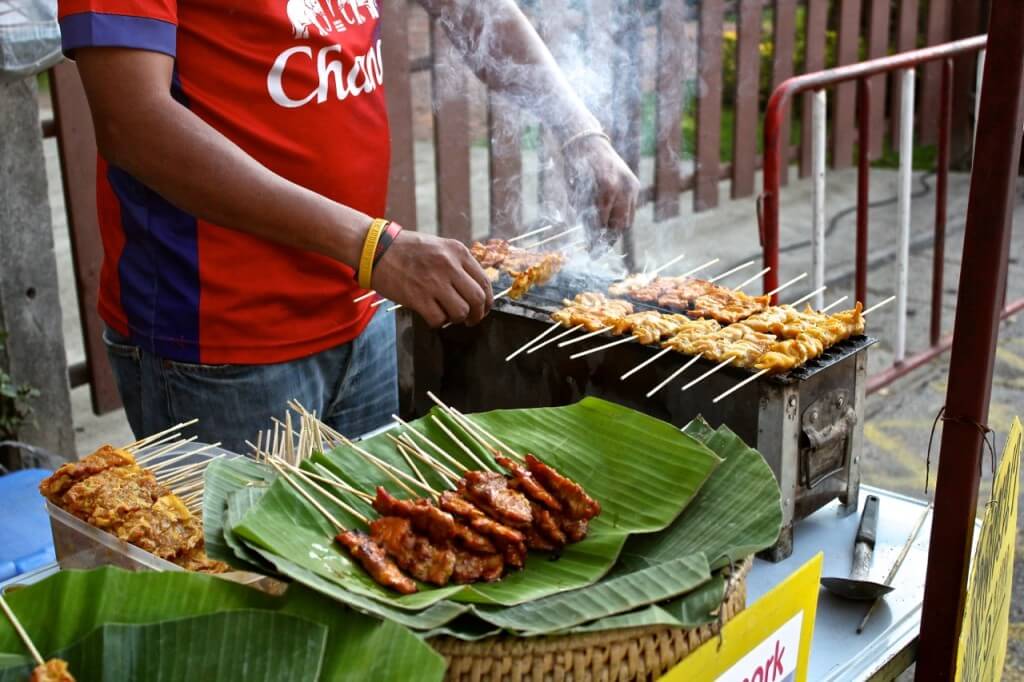
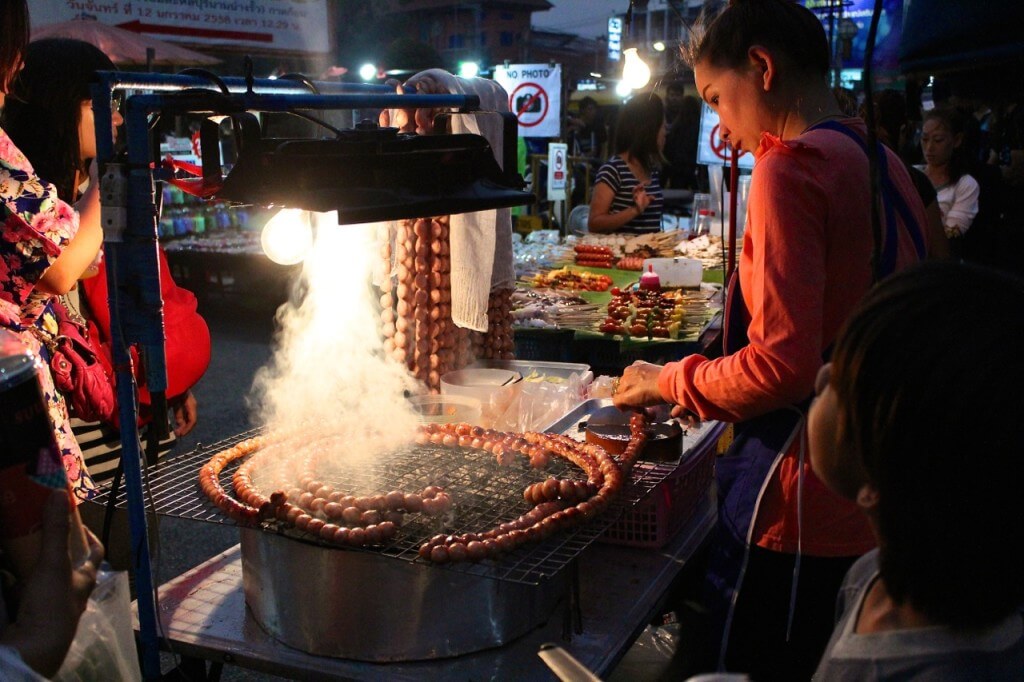








Thank you for this. So useful. Back in Thailand again for the 35th time or something over 30 years. Diagnosed with celiac disease 1 year ago and this fells like my first time foodwise :-)
/Stefan
Very useful. Thank you Lisa!
You’re welcome! Glad you found the post helpful. :)
Thank you for this, Lisa! I know it’s an older post, but still a huge help! I head off to Thailand soon, so this is great. It seems like the “normal” precautions to take that I’m used to with being in Asia and eating (some) street food over the past year. I haven’t been to Thailand yet though, so I’m so appreciative of this extensive post!
Happy you found this post helpful Carrie! And have an amazing time in Thailand!!
This post is so useful for travels. These tips will work not only in Thailand, but also in most of the Asian cities.
Yes, very true! :)
One very important point it seems all bloggers miss, if youve having deep fried food try to look in the oil,if you can see dark pieces in the bottom or the oil is turning light brown,its old oil,also pre-cooked stuff on the stall,if the batter isnt a bright yellow colour,avoid it,old oil again which suggests the vendor is without many customers.
Great point about the oil! I avoid anything fried in stalls as I’m gluten-free and concerned about cross-contamination, but from a general health safety standpoint as well, it should definitely be considered. Thanks Alexander!
This post is fantastic! I couldn’t bear ever giving up on street food so these are some great tips! Thanks for sharing :)
So glad you like it Mirna! :)
I just found this blog this morning while searching for gluten-free Amed tips and am very impressed. I’m a celiac, very gun-shy about trying new places, and, when traveling, tend to patronize the same places repeatedly once I eat safely. This post is awesome, as I always assumed that the meatballs/fish balls in Thailand were off limits for celiacs but may carefully try some next time I visit.
I LOVED Amed!! I have several blog posts still to write on traveling GF in Bali. :) But if you’re visiting Amed make sure to hit up Warung Enak and Amed Organik. As for the fish/meat balls, many are safe, but as always it’s best to double check ingredients. I’ll have GF travel guides soon on Sydney, Chiang Mai and Bali…so keep your eyes peeled! And kudos to you for traveling! The reward is so worth it!! x
Thanks for your response. I’m looking forward to reading more about Bali and Chiang Mai. I’ve threatened to go to the latter but have always been boring and revert to beaches and Bangkok instead.
Just found this blog, and i’m loving it! I’m currently in uni (and following the paleo lifestyle), and am planning on taking a gap year to go wwoofing in south east asia, so these posts have been very helpful. Excited to see what else you have in store :)
Hi Brittany – Ooooh, I’m so excited for you! You’ll have a blast in SE Asia! Some countries will definitely be easier than others to stick to a Paleo diet, but it’ll be worth all the effort. And if you don’t have a specific food allergy, remember that it’s all about balance, not rigid rules. ;) PS – if you head down to Bali (where I’m at now), it’s a piece of cake to eat healthy! xo